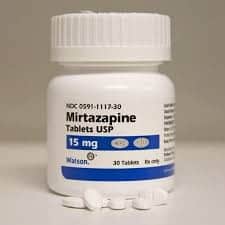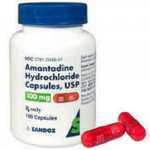
Background
Mirtazapine was developed for human use as an antidepressant for moderate to severe depression. While there is certainly a call for anti-anxiety pharmaceuticals in veterinary medicine, Mirtazipine’s side effect of an increased appetite, is what makes it so useful.
The drug also exerts anti-nausea effects by acting on the neuroreceptors in the intestine and stomach which in turn communicate with the vomit center of the brain. Obviously, a medication that addresses both nausea and appetite loss is great for treating many medical conditions that affect appetite.
The medication comes in tablet forms, a transdermal gel and can be compounded into a small amount of liquid that makes administration to cats easier for some owners.The transdermal gel is applied to the inner surface of the ear and is absorbed directly through the skin as described below.
How This Medication Is Used

Mirtazapine is used in the treatment of conditions where poor appetite and nausea go together such as in the treatment of intestinal/stomach disease, liver or kidney disease, or any other condition involving both nausea and appetite loss. Mirtazapine can also be used to alleviate the nausea/appetite loss that accompanies the treatment of cancer by chemotherapy.
Oral Use in Cats
Mirtazapine works best in cats when a smaller (3-3.75mg dose) is used daily rather than when a larger dose is used less frequently. On the flip side of this, however, is the reputation of many cats for being difficult with regard to oral medication. Pilling with the larger size (15mg tab) 2-3 times per week may end up being more practical than getting a compounded medication in a smaller strength for daily dosing.
Compounding and the transdermal gel may make daily dosing easier and stop the “loopiness” some owners report initially when giving cats higher doses.
Cats with Liver or Kidney Disease
In the event of liver disease or kidney disease, the clearance of this drug from the body is reduced by approximately 30% so ideally the dosing interval should also be reduced. Check with your veterinarian for instructions.

Side Effects
The most common side effect of this medication is drowsiness, though hyperactivity was reported in 11% of cats using the transdermal gel. In cats, increased affectionate behavior is reported as well as increased vocalization. These side effects can be reduced with lower daily dosing.
Serotonin syndrome is a potential side effect should brain levels of serotonin get too high but this syndrome generally requires a combination of serotonin-increasing medications – such as mirtazipine given along with prozac.
This syndrome is noted by seeing tremors/shivering, dilated pupils, difficulty breathing, elevated body temperature, high heart rate or high blood pressure. Cats with serotonin syndrome sometimes demonstrate general hyperactivity. If there is any question that serotonin syndrome is occurring, see a veterinarian right away.
Rare Side Effects:
Occasionally, mirtazapine has been reported to cause abnormalities in blood cell lines developing in the bone marrow. If a patient is known to have leukemia, low platelets, or some other blood disease mirtazapine can still be used but extra monitoring tests are probably in order.


